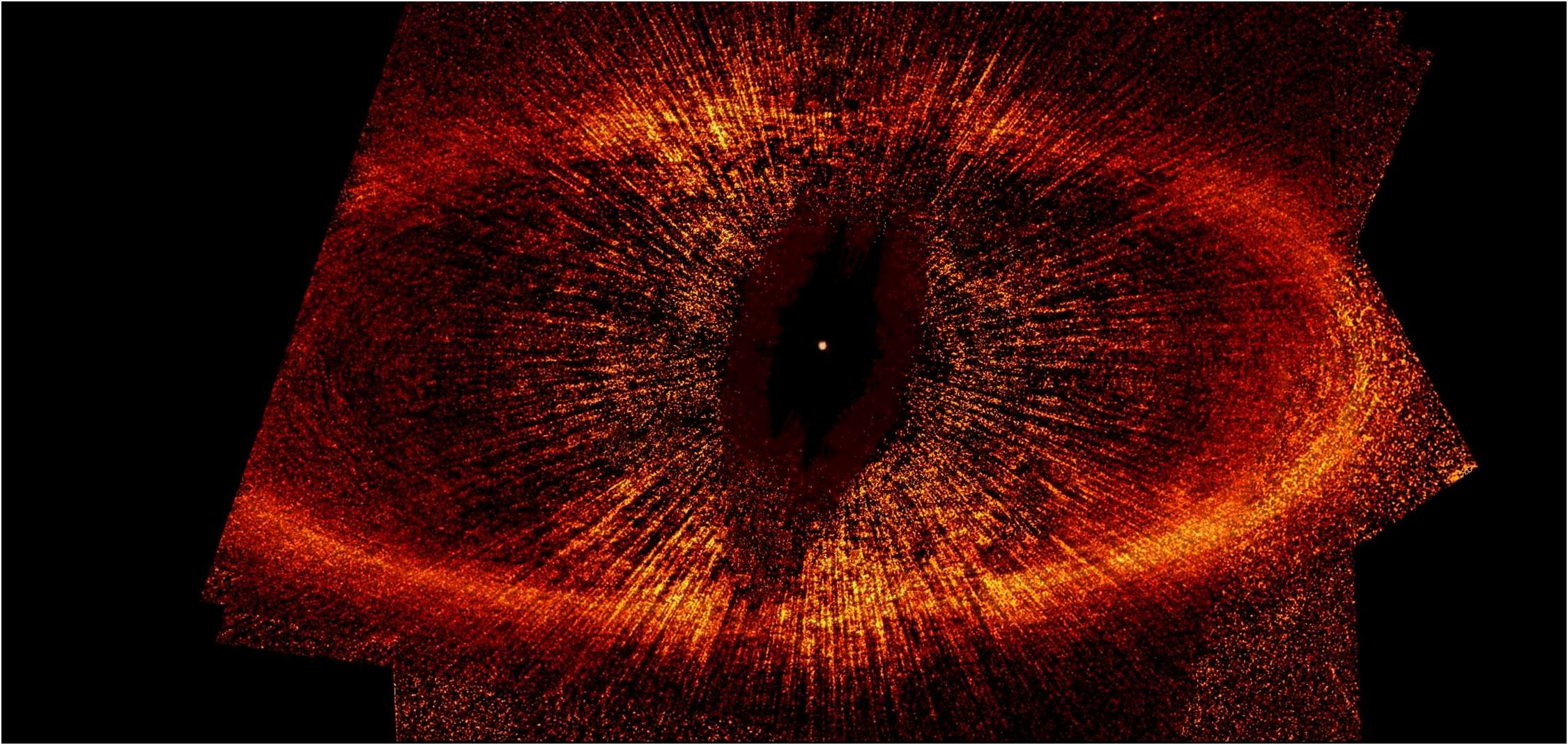The nearby (on a galactic scale) star Fomalhaut has a giant ring that has puzzled astronomers since its discovery in 2005. Evidence has now been published that the ring is even more out of kilter with expectations, and a giant planet probably has a role.
Fomalhaut is not a name that rolls easily off the tongue. Most people would be surprised to learn it’s brighter than much more famous stars such as Castor and Regulus. A strange-sounding name and a southern location aren’t good for fame. Its status is much higher among astronomers, however, thanks to a giant, oddly-shaped debris ring that led to it being given the nickname the “Great Eye of Sauron.”
Very young stars are usually surrounded by proto-planetary disks, and sometimes parts of these are cleared so that what is left becomes more of a ring, but Fomalhaut has some unusual features.
Fomalhaut has several disks around it. The inner two, both closer to the star than the Earth is to the Sun, have some features we don’t understand, but the really odd aspect to the system is called the “Main belt” and lies 133-158 AU from the star. If there were a debris disk the same distance from the Sun, Voyager 2 would still be travelling through it now, while Voyager 1 would have left not long ago.

Fomalhaut and its disk look very different to the Hubble telescope, making the basis for its nickname very clear.
Perhaps the strangest feature of this outer disk/ring is its eccentricity. The rings around Saturn, which serve as something of a model for such disks, are beautifully circular, but Fomalhaut’s outer disk is stretched in one direction, so the star does not sit at the center. We know from Kepler’s laws that’s how planets move, but as far as we are aware, debris disks are usually much more rounded.
Using the Atacama Large Millimeter/submillimeter Array (ALMA) astronomers observed the disks with unprecedented precision. They discovered the outer disk’s eccentricity varies with distance. The further one goes from Fomalhaut, within the disk, the more rounded orbits become, technically known as a “negative eccentricity gradient”
“[The eccentricity] steadily drops off with distance, a finding that has never before been conclusively demonstrated in any debris disk,” Dr Joshua Bennet Lovell of the Harvard-Smithsonian Center for Astrophysics said in a statement.
Models of disk structures only produce this outcome if there is a planet with a somewhat eccentric orbit running like a sheepdog inside the ring’s inner edge. Such a planet would need to be large to have enough gravity to exert such influence, and probably orbiting at a distance 3-4 times that of Neptune from the Sun. Its mass would be somewhere in the Saturn range, and its eccentricity greater than Pluto’s, let alone any of the actual planets in the Solar System.
At just 25 light-years away, a tiny fraction of most of the stars with interesting surrounds, Fomalhaut offers an exceptional opportunity to study disk behavior. However, the fact that it even has remnant disks is somewhat surprising. Disks are a feature of young stars, but often don’t last long. Estimated ages for the planets suggest the Sun’s disk was largely gone within tens of millions of years of its formation.
Fomalhaut was thought to be 100-300 million years old, but a more recent study upped that to 440 million years, which raises the question of why the disks survive, even if the outermost one is now more of a ring. The influence of the shepherding planet may not only explain how the outer disk turned into a persistent ring, but could provide lessons for how other star systems evolve, and why some disks persist for billions of years.
The presence of a giant planet at such an immense distance from a star twice as massive on the Sun also offers hope for Planet X fans.
Fomalhaut is part of a triple star system. However, the other members of that system, Fomalhaut B and C are at such enormous distances from the primary star (an astonishing 2.5 light-years for Fomalhaut C) that their gravity could not be shaping the ring significantly.
The study is published in two papers in the Astrophysical Journal and the Astrophysical Journal Letters
Source Link: Did A Giant Planet Sculpt Fomalhaut’s Stunning Ring Into Its Squashed Shape?